Introduction* This report is a supplement to "
ReVox B710 Tape Deck - Successful Wow & Flutter Restoration", published to the AudioCircle Vintage site detailing the successive steps that reduced, and finally achieved the manufacturer's specification for wow and flutter.
https://www.audiocircle.com/index.php?topic=190279.0
* As described in the report, my existing AnalogMagik turntable and cartridge test program, together with a Wow and Flutter (W&F) master calibration tape from GennLab proved successful in acquiring and processing the B710 tape deck W&F measurements.
* Now, responding to member's feedback it was requested if I could repeat these W&F tests using the WFGUI program written by Alex Freed. However, prior to this request I had no knowledge of the WFGUI program nor any experience with it.
* As written in the report conclusion, "
It would be interesting to see how these results compare using a professional W&F meter, although it would be difficult to justify the purchase of a W&F meter for a single experiment." As the WFGUI program offered a no additional cost option I agreed to try it.
Purpose* This report documents the W&F results achieved with my ReVox B710 tape deck together with the AnalogMagik turntable/cartridge test program and the WFGUI tape player test program, first using a GennLab W&F master calibration tape hereafter referred to as "Tape 1", and later using an A.N.T. Audio W&F master calibration tape hereafter referred to as "Tape 2".
Scope* This report is limited to the W&F results obtained in playback mode using the two W&F calibration tapes with the AnalogMagik turntable/cartridge test program and the WFGUI tape player test program. W&F measurements in recording mode, or measurements obtained with other W&F test programs or professional W&F meters are outside the scope of this report.
Equipment Setup* The equipment setup for all W&F tests described in report "
ReVox B710 Tape Deck - Successful Wow & Flutter Restoration" using the AnalogMagik software program is shown in Figure 1.
* A preamplifier having RIAA phono equalization, together with the recommended ART Pro Soundcard is required for interfacing with the AnalogMagik turntable/cartridge test package. While RIAA phono equalization is not needed with tape signals, I retained the same preamplifier for signal boosting and setup consistency. (Successful restoration of this vintage preamplifier is documented in report "
AGI Model 511 Preamplifier Restoration"
https://www.audiocircle.com/index.php?topic=186321).
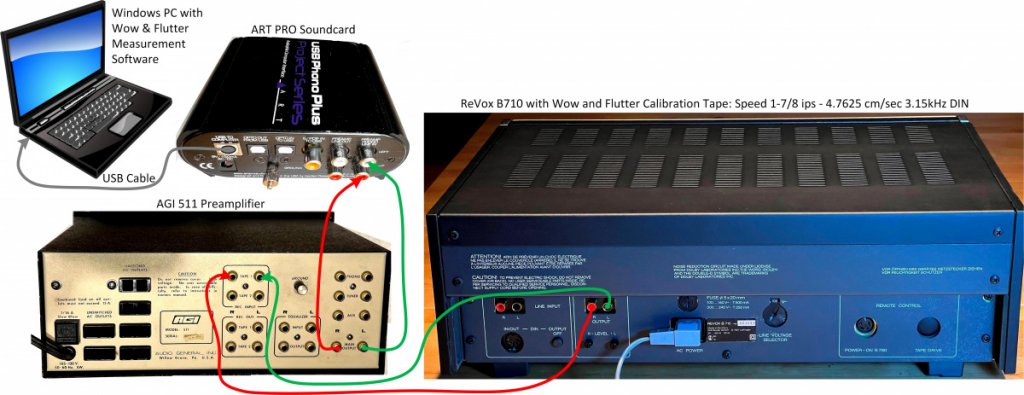 Figure 1. Outputs of B710 Tape Deck to Preamp, Preamp output into Soundcard connected to Windows PC by USB cable.
Figure 1. Outputs of B710 Tape Deck to Preamp, Preamp output into Soundcard connected to Windows PC by USB cable.* To minimize any variables between the two test configurations, the same equipment setup shown in Figure 1 was retained for the W&F tests using the WFGUI program. The only difference between the two equipment setups was the W&F test program running on the Windows PC.
* Careful cleaning with isopropyl alcohol of the tape head, capstan shafts and pinch rollers was done before performing each test.
* No changes or adjustments were made to the B710 tape deck throughout the duration of this testing.
* Reference Tape 1. Quoting from the GennLab website, "
The residual W&F of the tape itself is 0.022 % RMS WEIGHTED measured to NAB / JIB C5551 Standards using for playback the same MX5050 Reel to Reel tape recorder the tape has been recorded on. A few measurements of the same tape portion have been done using a Neutrik A2 analizer. The results from 0.008% to 0.036% averaged to 0.022%."
* Reference Tape 2. Quoting from A.N.T Audio correspondence, "
The conservative estimate for W&F is below 0.03% DIN weighted, 0.015% WRMS, and 0.06% not-weighted".
* Following these statements, the actual W&F of the B710 unit in playback mode may be slightly lower than the values presented in this report.
Test Programs* A basic comparison of features and characteristics of the two W&F test programs is listed in Table 1.
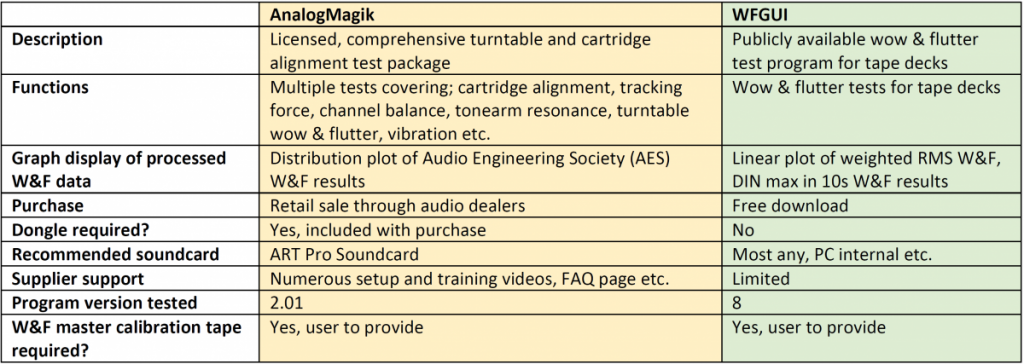 Table 1. Comparison of AnalogMagik Turntable/Cartridge and WFGUI Programs.
Table 1. Comparison of AnalogMagik Turntable/Cartridge and WFGUI Programs. * In my case as I already owned and had experience with the AnalogMagik program in the setting up and fine tuning of my vintage ReVox B790 and Oracle Premiere turntables, it made sense to take advantage of its AES W&F processing to evaluate my B710 tape deck. My additional cost was just the W&F master calibration tape.
* Note there will be differences with; processing standard (AES, DIN, RMS etc.), usability, performance, support etc. between a licensed multipurpose test program designed for turntable and cartridges, and a free download W&F test program developed for tape decks. Nevertheless, both programs proved useful and straightforward to use and would likely benefit most tape deck users for basic W&F measurements.
* The primary W&F output of the AnalogMagik turntable/cartridge test program follows the Audio Engineering Society (AES) standard using a Weighted Peak Flutter measurement, whereas the primary W&F output of the WFGUI program is the Weighted Root Mean Squared (WRMS) measurement.
* There is a nice diagram (Fig. 2) on the site "
Reflective Observer - Wow & flutter explained", which I found very helpful in explaining the different measurements. The Y-axis (no scale) labelled "Output" represents the measured voltage level or signal amplitude. The coloured label "Quasi Peak" in the diagram has also been described as "Weighted Peak".
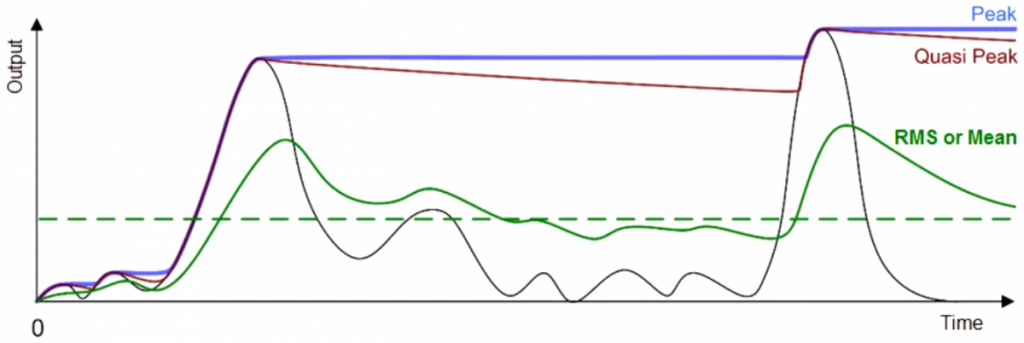 Figure 2. Explanation of measurements: Peak, Quasi-Peak, RMS or Mean - courtesy Reflective Observer - Wow & flutter explained.
Figure 2. Explanation of measurements: Peak, Quasi-Peak, RMS or Mean - courtesy Reflective Observer - Wow & flutter explained.* The following Table 2 describes how the plot examples in Figure 2 relate, in general, to the W&F measurements in this report.
 Table 2. Examples of W&F relationships depicted in Figure 2. W&F Results - AnalogMagik with Tape 1
Table 2. Examples of W&F relationships depicted in Figure 2. W&F Results - AnalogMagik with Tape 1* An example of an Audio Engineering Society W&F measurement is shown in Figure 3. (This is similar to "
Figure 15. Example of a final W&F measurement" shown in report "
ReVox B710 Tape Deck - Successful Wow & Flutter Restoration").
 Figure 3. Example of AES W&F measurement acquired using AnalogMagik with Tape 1.
Figure 3. Example of AES W&F measurement acquired using AnalogMagik with Tape 1.* A total of ten (10) AES W&F measurements were acquired. From this sample size of 10 gave a mean value
AES W&F of
0.088%, with standard deviation 0.006.
W&F Results - WFGUI with Tape 1* Using the identical equipment setup and same W&F master calibration tape from the AnalogMagik test, approximately 5-minutes of continuous data were logged to text file. Important WFGUI settings selected were
DIN,
3150 Hz, and
Save log.
* Throughout this 5-minute recording session, a total of fifteen (15) screen captures were acquired. Screen capture examples of a low W&F value and a high W&F value are shown in Figures 4 and 5, respectively.
* Note, the WFGUI signal panel displays a light blue trace against a dark blue background, which can be hard to read and the dark blue colour when printing consumes extra toner ink. To improve this, I removed the dark blue background using the graphics software CorelDRAW function, "Effects -> Adjust -> Replace Colors".
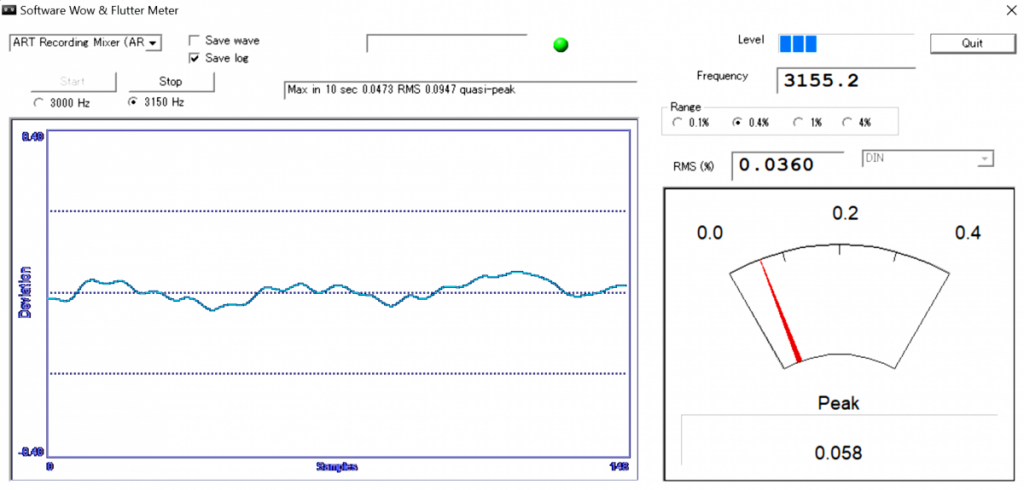 Figure 4. Example of a low W&F value acquired using WFGUI with Tape 1.
Figure 4. Example of a low W&F value acquired using WFGUI with Tape 1.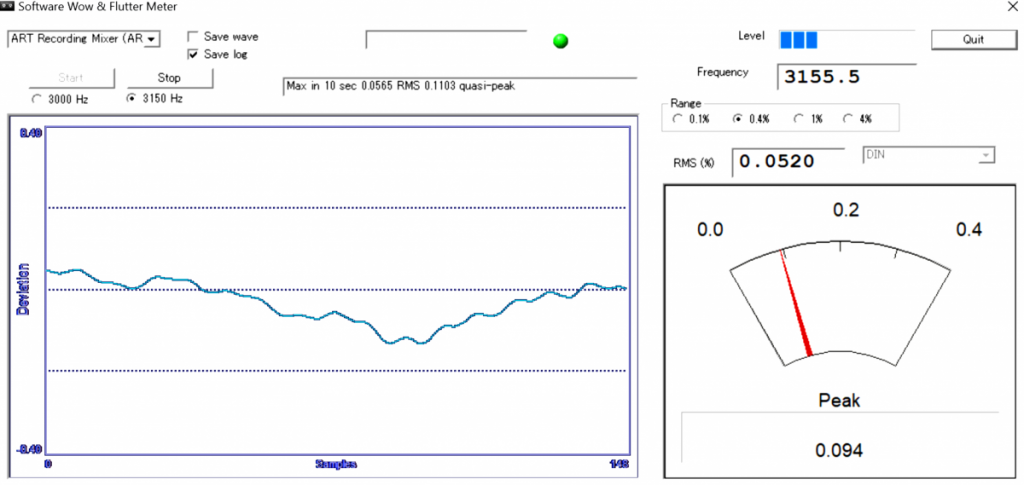 Figure 5. Example of a high W&F value acquired using WFGUI with Tape 1.
Figure 5. Example of a high W&F value acquired using WFGUI with Tape 1.* Although all relevant data is available, I found some of the nomenclature used in the WFGUI labelling confusing. But not to complain, I'm grateful it's offered as a free program.
* From reading the Meter panel box labelled "
RMS (%)" values, and the Meter dial indicator labelled "
Peak" values (with "
DIN" selected, presume this is meant to be Quasi-Peak, also referred to as Weighted-Peak), the Mean and Standard Deviations were calculated for this sample size of 15 screen captures.
- Mean value of the
WRMS W&F was
0.046%, with standard deviation 0.006. As a cross-check, the data saved to Log file produced a mean value WRMS W&F of 0.044% with standard deviation 0.007, in close agreement.
- Mean value of the
Quasi-Peak/Weighted-Peak W&F was
0.081%, with standard deviation 0.010.
* Next, the data saved to Log file was imported into Excel and plotted as shown in Figure 6.
 Figure 6. W&F plot from WFGUI log file data using Tape 1 - Weighted RMS %, DIN % max in 10 seconds, Speed-Hz.Follow-up Test
Figure 6. W&F plot from WFGUI log file data using Tape 1 - Weighted RMS %, DIN % max in 10 seconds, Speed-Hz.Follow-up Test* Later, I was asked if I could repeat the tests using a W&F master calibration test tape supplied from A.N.T. Audio (Tape 2), and these results are presented as follows. While all results are listed in Table 3, to keep within file size limitations only a couple of the images are displayed here.
W&F Results - AnalogMagik with Tape 2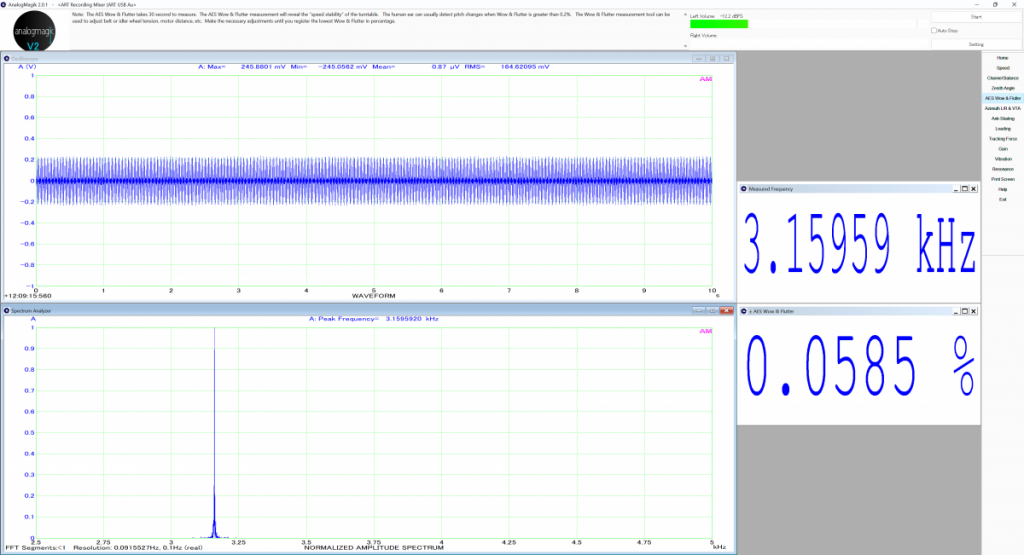 Figure 7. Example of AES W&F measurement acquired using AnalogMagik with Tape 2.
Figure 7. Example of AES W&F measurement acquired using AnalogMagik with Tape 2.* A total of thirty-two (32) AES W&F measurements were acquired. From this sample size of 32 gave a mean value
AES W&F of
0.057%, with standard deviation 0.006.
W&F Results - WFGUI with Tape 2* As before, using the identical equipment setup and same W&F master calibration tape from the AnalogMagik test, approximately 14-minutes of continuous data were logged to text file. Again, the same important WFGUI settings selected were
DIN,
3150 Hz, and
Save log.
* Throughout this 14-minute recording session, a total of twenty-nine (29) screen captures were acquired (not shown).
* From reading the Meter panel box labelled "
RMS (%)" values, and the Meter dial indicator labelled "
Peak" values the Mean and Standard Deviations were calculated for this sample size of 29 screen captures.
- Mean value of the
WRMS W&F was
0.033%, with standard deviation 0.006. As a cross-check, the data saved to Log file produced a mean value WRMS W&F of 0.032% with standard deviation 0.004, in close agreement.
- Mean value of the
Quasi-Peak/Weighted-Peak W&F was
0.056%, with standard deviation 0.007.
* Finally, the data saved to Log file was imported into Excel and plotted as shown in Figure 8.
 Figure 8. W&F plot from WFGUI log file data using Tape 2 - Weighted RMS %, DIN % max in 10 seconds, Speed-Hz
Figure 8. W&F plot from WFGUI log file data using Tape 2 - Weighted RMS %, DIN % max in 10 seconds, Speed-Hz.
Summary of W&F Results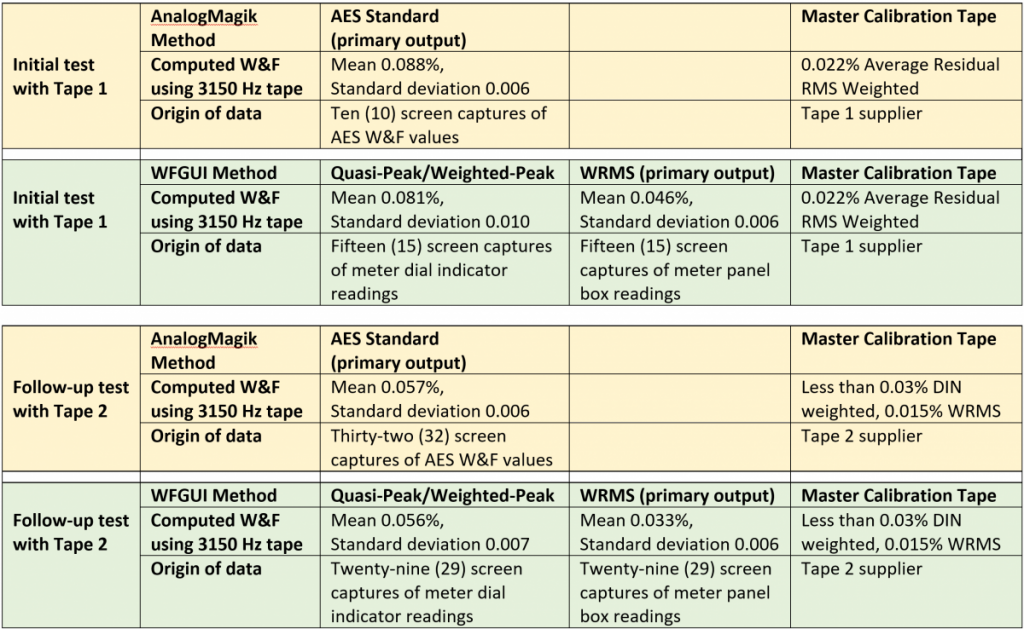 Table 3. Results of the W&F measurements: AES, Quasi-Peak/Weighted-Peak, and WRMS.
Table 3. Results of the W&F measurements: AES, Quasi-Peak/Weighted-Peak, and WRMS.* From reading the Audio Engineering Society standard, the original version
AES6-2008 - quasi-peak method was updated in 2012 to version
AES6-2008 (r2012) 2-sigma statistical method, providing a more reliable and stable analysis, now referred to as Weighted Peak Flutter.
* Encouraging to see from this data set was the close numerical agreement of the AnalogMagik AES W&F value 0.088% vs. the WFGUI Quasi-Peak/Weighted-Peak W&F value of 0.081% using Tape 1, and AnalogMagik AES W&F value 0.057% vs. the WFGUI Quasi-Peak/Weighted-Peak W&F value of 0.056% using Tape 2.
* The relationship of the different waveforms shown in Figure 2 correlate with the observations from this WFGUI data set, i.e. Maximum Peak
> Quasi-Peak/Weighted-Peak
> RMS.
* An interesting observation from the WFGUI data set, the WRMS W&F values (0.046% and 0.033% for Tape 1 and Tape 2, respectively), in numerical terms, are about half the Quasi-Peak/Weighted-Peak W&F values (0.081% and 0.056% for Tape 1 and Tape 2, respectively). Quoting from the Reflective Observer, "
In practice, RMS value is usually about one half of quasi-peak value."
Final Notes* The reason for this writing is to share my observations, it's not an endorsement of any supplier.
* That said, both W&F programs and test tapes proved useful and straightforward to use and would likely benefit most tape deck users for basic W&F measurements. While I can't say if the software programs would replace a professional W&F meter, they appear well suited for the casual user or for simply observing changes in W&F after a tape deck repair.
* In my case as I have owned this ReVox B710 tape deck since new in 1982 (where did 42 years go?), I'm quite pleased with the W&F results achieved. For this B710 extensive restoration ("resurrection" may be a more apt description), the critical issues to bring the W&F within specification were all mechanical; pinch rollers condition, solenoid plunger alignment, capstan thrust bearings, lubrication of the capstan shafts and sintered bearings etc., and any of the test programs and test tapes described in this report would be suitable for the task of measuring and quantifying step-by-step W&F improvements during repairs.
* Looking at the different standards and methods in use, it would be helpful whenever we share our W&F measurements to describe them as clearly as possible. For example:
a) To list the standard: AES, CCIR, DIN, IEC, JIS, NAB.
b) To state the method: Peak, Quasi-Peak/Weighted-Peak, RMS, 2-Sigma method.
c) To state the test frequency: 3000 Hz, 3150 Hz.
d) To list the calibration tape's residual W&F.
References* ReVox B710 Tape Deck - Successful Wow & Flutter Restoration:
https://www.audiocircle.com/index.php?topic=190279.0* Analogmagik for turntable test program:
https://www.analogmagik.com/* AES Standard - Method for Measurement of Weighted Peak Flutter of Analogue Sound Recording and Reproducing Equipment AES6-2008 (r2012). Copyright published by Audio Engineering Society, Inc.
https://aes2.org/publications/standards-store/?id=15 Document downloaded 13 October 2024.
* GennLab site for Cassette Alignment Tapes:
https://www.gennlab.com/alignment_cassettes.html* A.N.T. Audio site for Cassette Alignment Tapes and download site for Alex Freed's WFGUI program:
http://www.ant-audio.co.uk/index.php?cat=post&qry=library* Reflective Observer - Wow & flutter explained:
https://reflectiveobserver.medium.com/wow-flutter-explained-31cc9495d24 Site accessed 26 October 2024.
* ReVox B710 service manuals:
https://www.reeltoreel.nl/studer/Public/Products/Revox/Revox_B710/